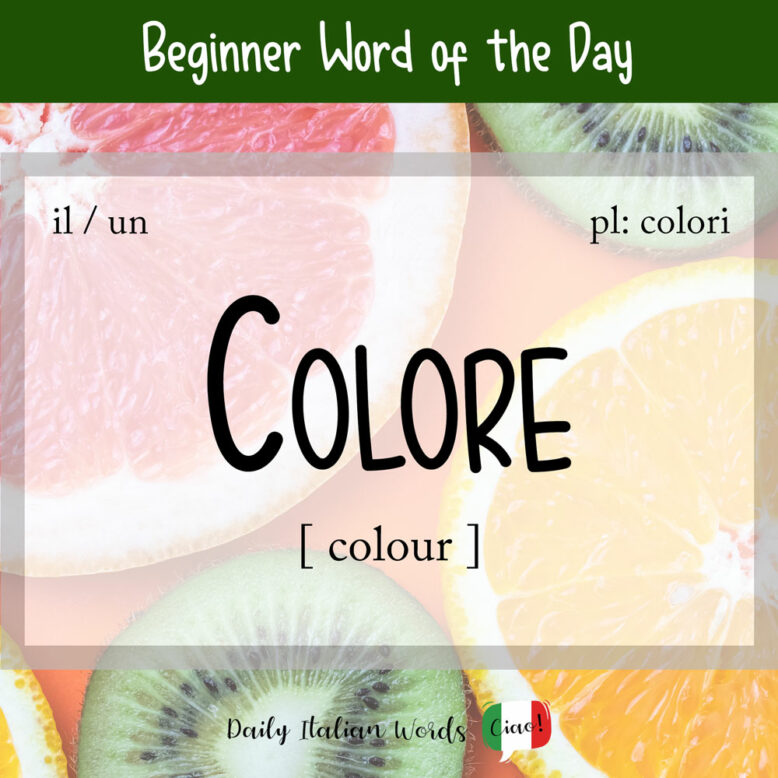The Italian word for colour, or color if you live in the States, is colore (masculine, plural: colori), both of which come from the Latin color.

The seven most commonly cited and remembered colours of the rainbow (colori dell’arcobaleno), as defined by Isaac Newton, are as follows:
Ci sono sette colori in un arcobaleno.
There are seven colours in a rainbow.

Interestingly, the word colore is also one of many terms for paint in Italian, along with tinta, pittura and vernice.
Non posso finire di dipingere le pareti perché è finito il colore.
I can’t finish painting the walls because the paint has run out.
A couple of useful words related to colore include the verb colorare (to colour, to paint, to embellish) and the adjective colorato (coloured, dyed, lively).
The verb colorire also means to colour, but it doesn’t refer to the artistic action of colouring but to a change in colour of someone or something.
- far colorire la cipolla means to brown the onion
- colorire un racconto means to make a story more interesting
- colorire in viso means to tan (abbronzarsi), or to blush (arrossire)
The adjective colorito follows the same logic. Un viso colorito means a bright, vivid face. You can also use it figurativly, for example to describe explicit language (linguaggio colorito).
Colore is regularly used to refer to a person’s complexion and more specifically, what it reveals about his or her physical or spiritual state. For example, if you say that someone has un brutto/cattivo colore, you’d be suggesting that they have a terrible complexion, perhaps because they didn’t get enough sleep or drank too much the night before.
Yet another figurative meaning of colore is vivacity or intensity when pertaining to a story or performance.
La tua recitazione è priva di colori.
Your acting doesn’t pack a punch.
It can also translate as tendency or opinion when talking about an individual’s political views.
Daniele cambia spesso colore. Non ho la minima idea per chi voterà in questa elezione.
Daniele often changes his political opinion. I have no clue who he will vote for in this election.
Finally, colori (plural form) is also used to talk about the colours of national flags.
I colori d’Italia sono il verde, il bianco e il rosso.
The Italian colours are green, white and red.
Expressions featuring ‘colore’
Cambiare colore
Literal translation: to change colour
English meaning: turn pale or blush out of emotion OR to look better (after an illness)
Dirne di tutti i colori
Literal translation: to say all the colours
English meaning: let off steam, to talk freely without concern for decency or the feelings of others
Farne di tutti i colori
Literal translation: to do all the colours
English meaning: to lead a busy life that is often reprehensible and dishonest, also used for kids when they make a big mess or a fuss
Vederne di tutti i colori
Literal translation: to see all colours
English meaning: to have many diverse experiences in life
Diventare di tutti i colori
Literal translation: to become all colours
English meaning: to change one’s expression due to feelings of shame, anger or indignation
Heather Broster is a graduate with honours in linguistics from the University of Western Ontario. She is an aspiring polyglot, proficient in English and Italian, as well as Japanese, Welsh, and French to varying degrees of fluency. Originally from Toronto, Heather has resided in various countries, notably Italy for a period of six years. Her primary focus lies in the fields of language acquisition, education, and bilingual instruction.


